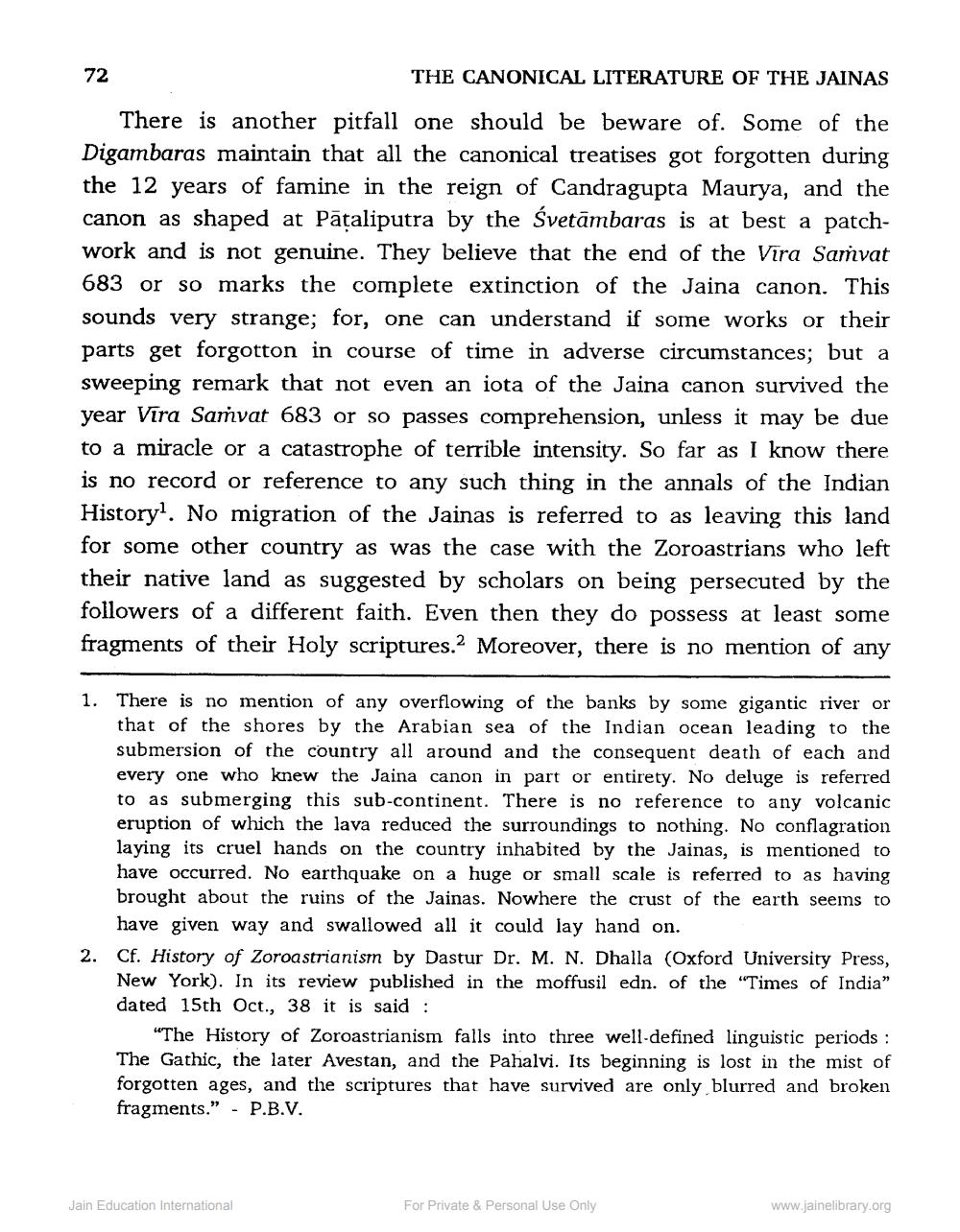________________
72
THE CANONICAL LITERATURE OF THE JAINAS
There is another pitfall one should be beware of. Some of the Digambaras maintain that all the canonical treatises got forgotten during the 12 years of famine in the reign of Candragupta Maurya, and the canon as shaped at Pataliputra by the Svetambaras is at best a patchwork and is not genuine. They believe that the end of the Vira Samvat 683 or so marks the complete extinction of the Jaina canon. This sounds very strange; for, one can understand if some works or their parts get forgotton in course of time in adverse circumstances; but a sweeping remark that not even an iota of the Jaina canon survived the year Vira Samvat 683 or so passes comprehension, unless it may be due to a miracle or a catastrophe of terrible intensity. So far as I know there is no record or reference to any such thing in the annals of the Indian History1. No migration of the Jainas is referred to as leaving this land for some other country as was the case with the Zoroastrians who left their native land as suggested by scholars on being persecuted by the followers of a different faith. Even then they do possess at least some fragments of their Holy scriptures. Moreover, there is no mention of any
1. There is no mention of any overflowing of the banks by some gigantic river or that of the shores by the Arabian sea of the Indian ocean leading to the submersion of the country all around and the consequent death of each and every one who knew the Jaina canon in part or entirety. No deluge is referred to as submerging this sub-continent. There is no reference to any volcanic eruption of which the lava reduced the surroundings to nothing. No conflagration laying its cruel hands on the country inhabited by the Jainas, is mentioned to have occurred. No earthquake on a huge or small scale is referred to as having brought about the ruins of the Jainas. Nowhere the crust of the earth seems to have given way and swallowed all it could lay hand on.
2. Cf. History of Zoroastrianism by Dastur Dr. M. N. Dhalla (Oxford University Press, New York). In its review published in the moffusil edn. of the "Times of India" dated 15th Oct., 38 it is said:
"The History of Zoroastrianism falls into three well-defined linguistic periods: The Gathic, the later Avestan, and the Pahalvi. Its beginning is lost in the mist of forgotten ages, and the scriptures that have survived are only blurred and broken fragments." P.B.V.
Jain Education International
For Private & Personal Use Only
www.jainelibrary.org




